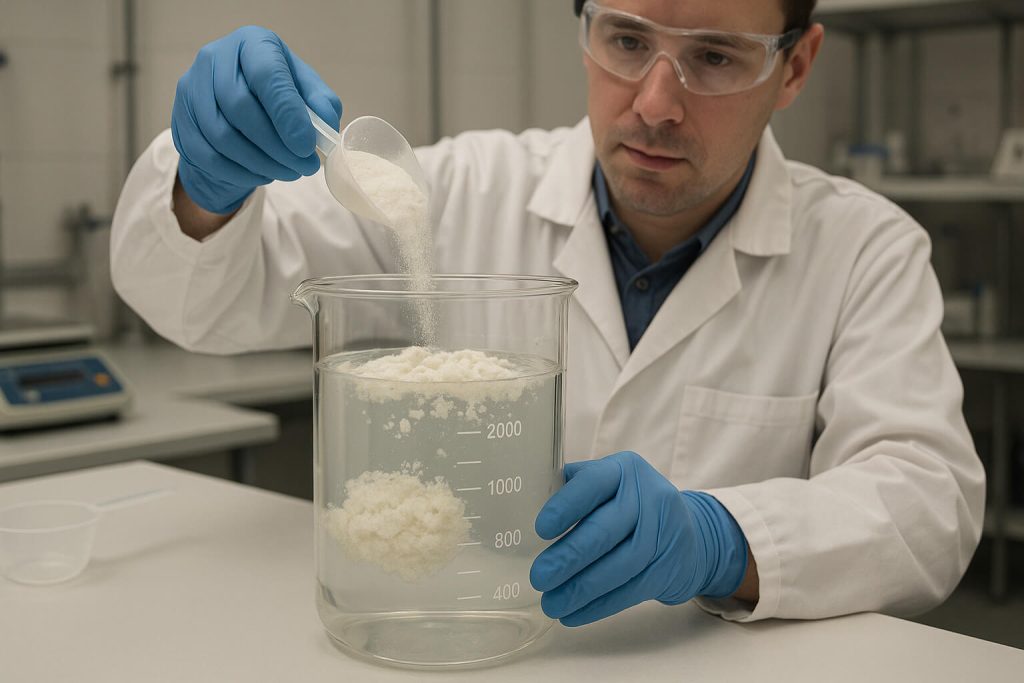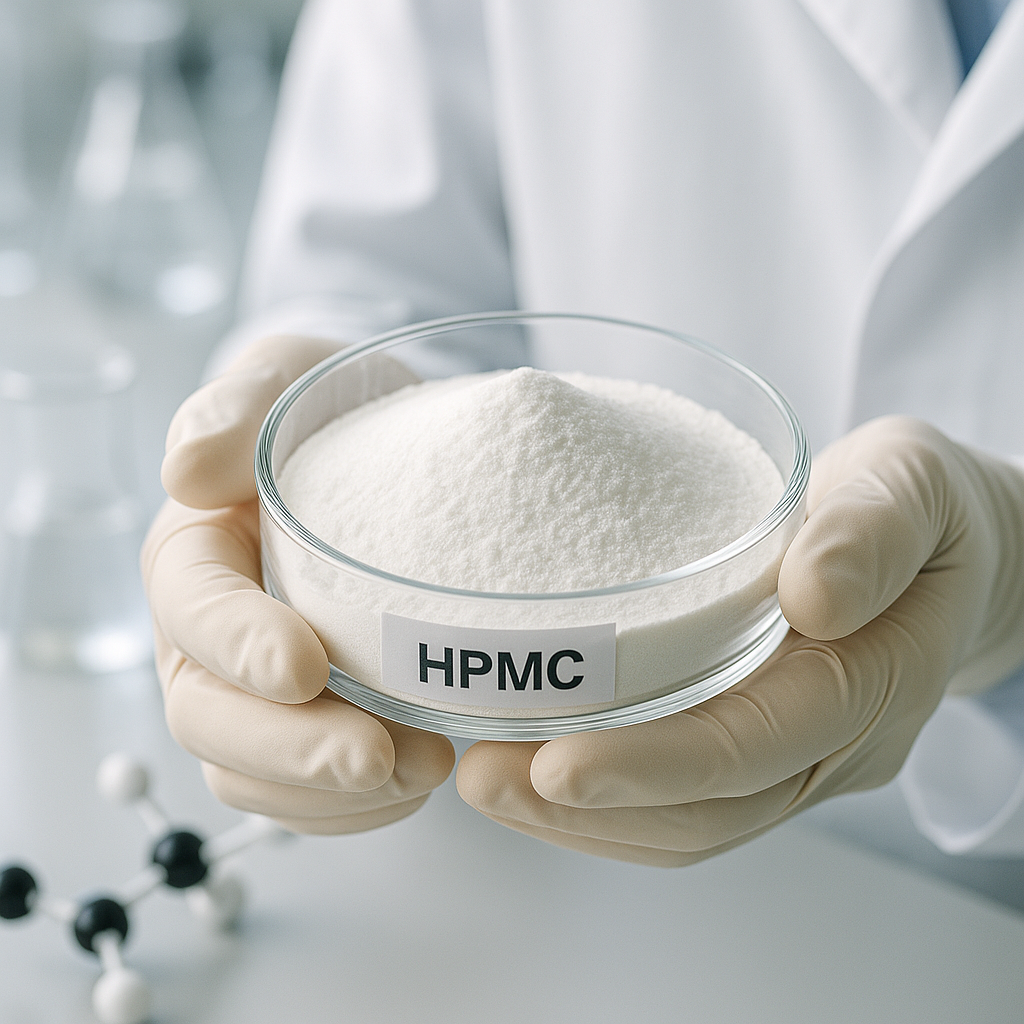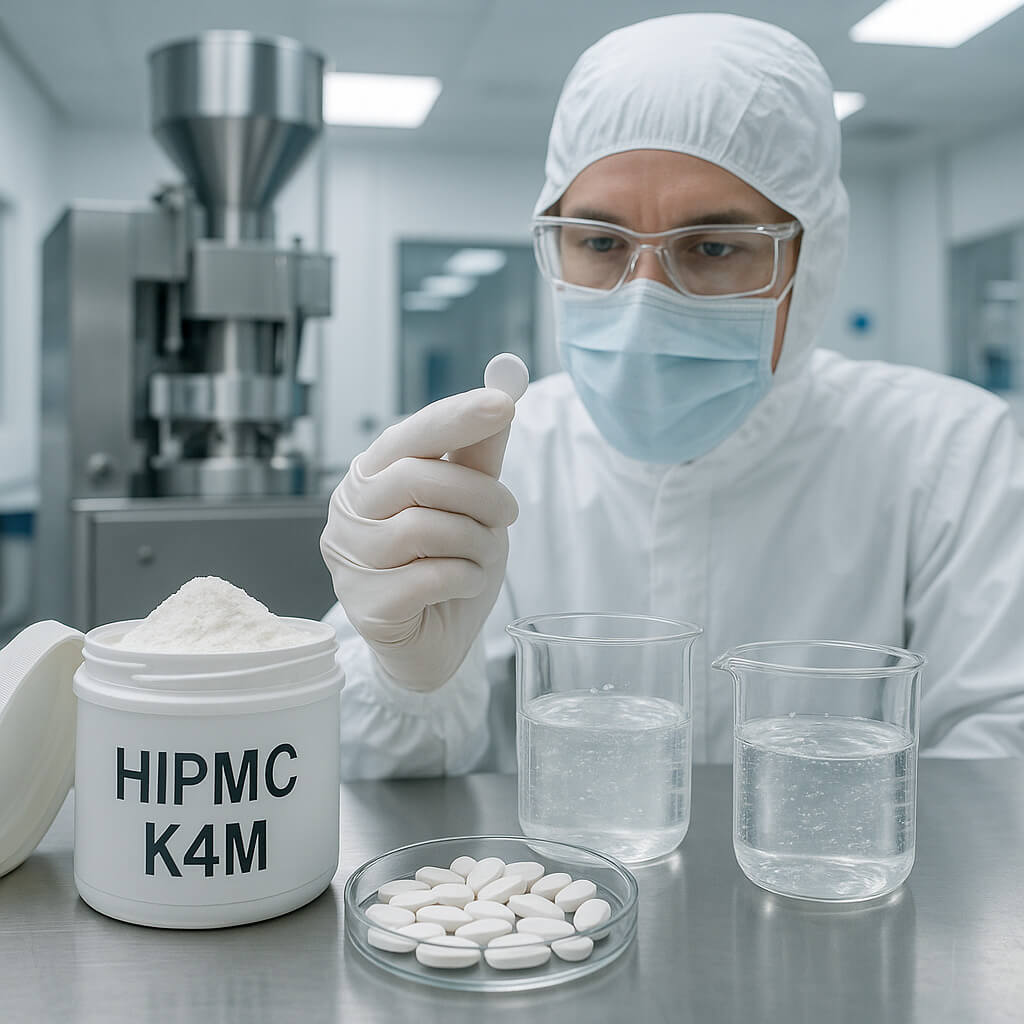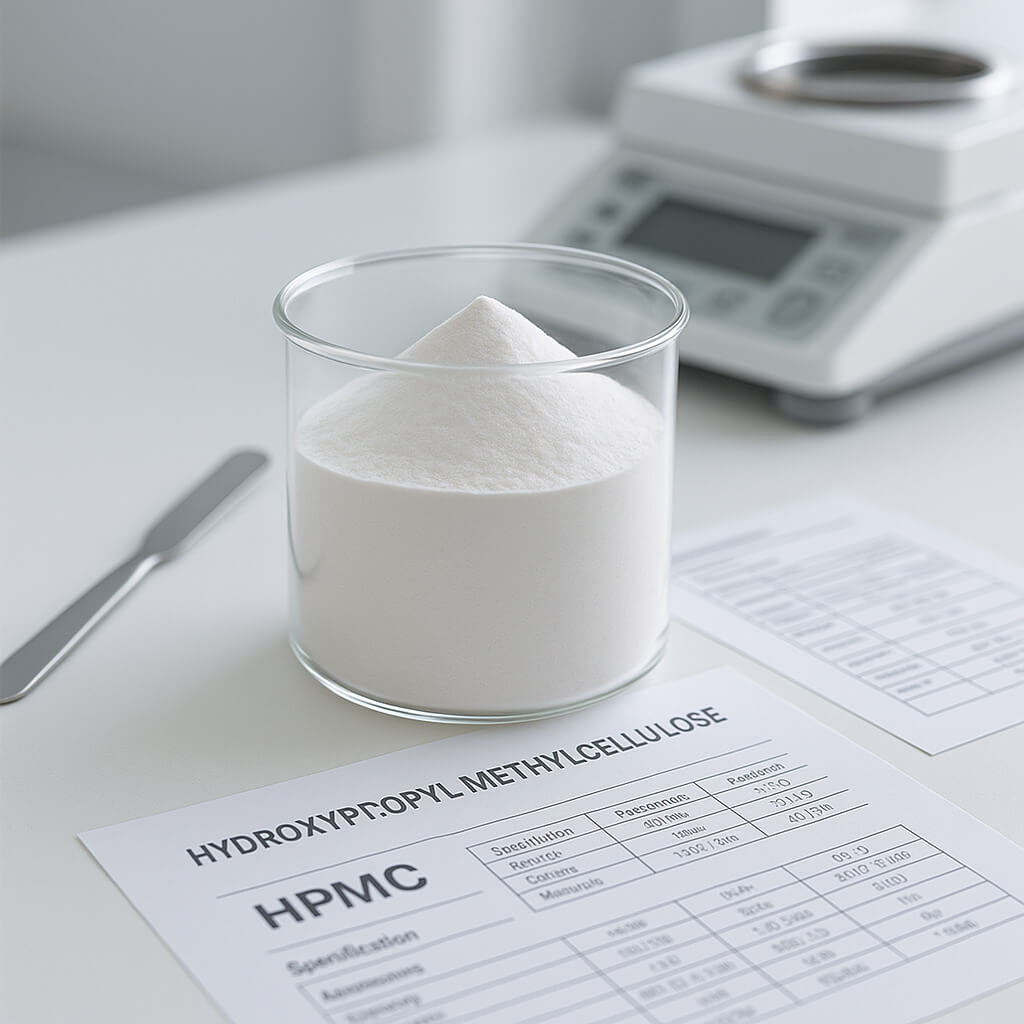When it comes to choosing the right Hydroxypropyl Methylcellulose (HPMC) grade for industrial applications, the question arises: Is HPMC 200000 viscosity considered high for industrial purposes? HPMC is used in a variety of industries, including construction, pharmaceuticals, and food, due to its unique ability to enhance the performance and consistency of various products. Understanding viscosity is key to making the right choice for your application, as it significantly influences the behavior and effectiveness of HPMC in different formulations. This article explores the different viscosity ranges for HPMC, comparing HPMC 200000 with other grades, and explains why viscosity matters in various industrial sectors.

1. What is HPMC and Its Common Uses in Industry?
HPMC, or Hydroxypropyl Methylcellulose, is a water-soluble cellulose derivative that plays a vital role in industries like construction, food, and pharmaceuticals. But here’s the kicker – despite being a simple compound, it has a wide range of applications, each requiring different viscosities for optimal performance. It’s primarily used as a thickening agent, emulsifier, binder, and stabilizer, which is why it’s essential in the production of construction materials, pharmaceutical tablets, and food additives.
In construction, HPMC improves the consistency of products such as tile adhesives, cement mortars, and plasters. The water retention properties of HPMC make it a critical ingredient for these applications, ensuring the mixture remains workable for longer periods. In pharmaceuticals, HPMC is used as a binder in tablet formulations, ensuring the uniform distribution of active ingredients. Similarly, in the food industry, HPMC serves as a stabilizer and emulsifier, often found in products like ice cream, salad dressings, and sauces.
But what’s the real story? Why does HPMC’s viscosity matter so much? It’s simple – viscosity affects the performance of HPMC in all these applications. Higher viscosity provides better control over the texture and flow of products, while lower viscosity might be preferred for easier application and faster drying times. The right viscosity ensures that products are both functional and efficient, meeting industry standards and expectations.
| Industry | Primary Use of HPMC | Application Examples |
|---|---|---|
| Construction | Thickening agent, water retention | Mortars, adhesives, plasters |
| Pharmaceuticals | Binder in tablet formulations | Tablets, capsules |
| Food | Stabilizer, emulsifier | Ice cream, sauces, dressings |
2. What Does Viscosity Mean in the Context of HPMC?
Viscosity is essentially a measure of a fluid’s resistance to flow. In the context of HPMC, it refers to how thick or runny a solution of HPMC is in water. Ready for the good part? The viscosity of HPMC directly influences how it behaves in industrial products. Higher viscosity means the solution is thicker and less fluid, which can be advantageous for certain applications but may also slow down processes like mixing and application.
Viscosity is typically measured in centipoise (cP) or millipascal-seconds (mPa·s), with higher values indicating a thicker solution. The key here is that the viscosity of HPMC can be adjusted by altering the grade, allowing manufacturers to fine-tune the product for specific applications. For example, in construction, high viscosity HPMC ensures that mortar or adhesive remains thick enough to be applied smoothly without running off. In pharmaceuticals, a higher viscosity helps maintain the consistency of the tablet formulation, ensuring that the active ingredients are uniformly distributed.
But what does this mean for you? If you’re sourcing HPMC for a project, it’s crucial to understand the viscosity required to achieve the desired consistency. Whether you need a thinner, quicker-drying mixture or a thicker, more stable one, viscosity plays a pivotal role in product performance.
| Viscosity Range (mPa·s) | Application | Preferred Industries |
|---|---|---|
| 10,000 – 50,000 | Low viscosity, quick-drying | Pharmaceuticals, Food |
| 50,000 – 100,000 | Medium viscosity | Cosmetics, Pharmaceuticals |
| 100,000 – 250,000 | High viscosity | Construction, Heavy coatings |
3. What is the Difference Between Low and High Viscosity HPMC?
When selecting HPMC for industrial applications, understanding the difference between low and high viscosity is essential. But here’s the kicker – the viscosity of HPMC not only determines how thick or thin the solution is, but also impacts its functionality in specific environments. Low viscosity HPMC generally offers faster dissolution and is easier to handle, making it ideal for processes where quick application and absorption are crucial. High viscosity HPMC, on the other hand, provides superior stability, enhanced workability, and a thicker consistency.
For example, in the pharmaceutical industry, high viscosity HPMC is used for controlled-release tablet formulations, as it ensures that the active ingredients are slowly released over time. In contrast, low viscosity HPMC might be used for immediate-release tablets that dissolve quickly after ingestion. Similarly, in construction, high viscosity HPMC is favored for applications like tile adhesives and grout, where a thicker consistency is necessary to prevent the mixture from flowing or sliding off surfaces during application.
High viscosity HPMC tends to be more versatile in formulations that require higher stability and consistency. However, it’s also more challenging to handle, as it can be slower to dissolve in water and harder to mix. On the other hand, low viscosity HPMC is easier to work with and ideal for applications where speed and efficiency are important. Ultimately, the choice between low and high viscosity comes down to the specific needs of the application.
| Viscosity Type | Properties | Best Applications |
|---|---|---|
| Low Viscosity | Thin, quick-drying | Immediate-release tablets, coatings |
| High Viscosity | Thick, stable | Controlled-release tablets, construction |
4. How is Viscosity Measured in HPMC?
Viscosity measurement is a critical aspect of quality control in industries using HPMC. But here’s where it gets interesting – viscosity can be measured in several ways depending on the application, including through the use of viscometers and rheometers. These tools measure the resistance of HPMC solutions to flow, providing accurate data on its performance under different conditions.
For example, in the construction industry, a Brookfield viscometer is often used to measure the viscosity of HPMC solutions in mortar or adhesive formulations. In pharmaceuticals, a rotational viscometer may be employed to test the viscosity of tablet coatings or gel formulations. These measurements allow manufacturers to ensure that the product meets the required specifications and performs optimally in its intended environment.
Understanding viscosity is not just about measuring thickness; it’s about understanding how that thickness affects performance. Whether it’s ensuring that a pharmaceutical product dissolves at the right rate or making sure a construction material has the right consistency for easy application, viscosity testing is an essential part of the manufacturing process.
| Viscosity Measurement Tool | Purpose | Industries |
|---|---|---|
| Brookfield Viscometer | Measures flow resistance | Construction, Food, Pharma |
| Rotational Viscometer | Measures shear rate | Pharmaceuticals, Cosmetics |
| Rheometer | Measures viscosity under various conditions | Research, Industrial R&D |
5. What Viscosity Range is Considered High for HPMC?
In the context of HPMC, the viscosity range that is considered “high” can vary depending on the application. But here’s the real story – high viscosity typically starts around 100,000 mPa·s and can go up to 200,000 mPa·s or more, depending on the specific grade of HPMC. The higher the viscosity, the thicker and more stable the solution will be, which is ideal for applications like tile adhesives, putty, and other construction materials.
High viscosity HPMC is also favored in pharmaceutical applications where controlled release is required. The thick consistency helps control the rate at which the active ingredients are released into the body, ensuring consistent therapeutic effects over time. In the food industry, high viscosity HPMC is used to stabilize emulsions and maintain the desired texture in products like salad dressings and sauces.
Understanding the viscosity range required for your application is essential for selecting the right grade of HPMC. The wrong viscosity can result in products that are either too thick and difficult to apply or too thin and ineffective in achieving the desired outcome.
| Viscosity Range (mPa·s) | Considered High for HPMC? | Applications |
|---|---|---|
| 100,000 – 150,000 | Yes | Pharmaceuticals, Construction |
| 150,000 – 250,000 | Yes | Food, Industrial Coatings |
| 200,000+ | Yes | Heavy-duty construction, Food |
6. How Does HPMC 200000 Viscosity Compare to Other Grades?
HPMC 200000 viscosity is often regarded as high when compared to other grades. What’s the real story here? This level of viscosity provides the thick consistency necessary for demanding applications like tile adhesives, construction mortars, and pharmaceutical tablet formulations. In construction, for example, the high viscosity of HPMC 200000 ensures that the material remains workable, providing longer application time without the mixture losing its consistency.
In pharmaceuticals, HPMC 200000 plays a critical role in controlled-release tablet formulations, helping to regulate the release of active ingredients. This viscosity grade helps maintain the integrity of the tablet over time, ensuring that it doesn’t break down too quickly and that the active ingredients are released steadily. In contrast, lower viscosity grades are more suitable for applications requiring faster dissolution or thinner consistency.
For food industries, HPMC 200000 provides the thickening power needed for applications like sauces, dressings, and ice cream. It helps maintain the desired texture and prevents separation, ensuring product consistency throughout the shelf life.
| HPMC Grade | Viscosity (mPa·s) | Best Applications |
|---|---|---|
| HPMC 50000 | 50,000 | Pharmaceuticals, Cosmetics |
| HPMC 100000 | 100,000 | Construction, Paints |
| HPMC 200000 | 200,000 | Heavy-duty construction, Pharmaceuticals |
7. What Are the Practical Applications of High Viscosity HPMC?
High viscosity HPMC, such as HPMC 200000, has various practical applications in industries like construction, pharmaceuticals, and food. But here’s the kicker – its thickening and stabilizing properties make it a must-have for many industries. In construction, high viscosity HPMC is often added to mortar and adhesive formulations to ensure better water retention and improved workability. This means that workers can apply the materials over larger areas before they start drying, saving time and improving the overall efficiency of the job.
In the pharmaceutical industry, high viscosity HPMC is used in tablet formulations where controlled release of active ingredients is crucial. The thick consistency ensures that the ingredients dissolve at a steady pace, providing long-lasting therapeutic effects. Similarly, in food manufacturing, HPMC 200000 is used to maintain the desired texture in products like sauces, dressings, and ice cream. The high viscosity helps keep these products stable, preventing separation and ensuring they remain consistent throughout the product’s shelf life.
The main takeaway? High viscosity HPMC plays a crucial role in improving the quality, stability, and performance of products across several industries.
| Industry | Application | Effect of High Viscosity HPMC |
|---|---|---|
| Construction | Mortar, adhesives | Improved workability, better water retention |
| Pharmaceuticals | Controlled-release tablets | Steady release of active ingredients |
| Food | Sauces, dressings, ice cream | Consistent texture, prevents separation |
8. Why Do Some Industries Prefer High Viscosity HPMC?
Industries prefer high viscosity HPMC for several reasons, primarily because it offers enhanced stability and control. Ready for the good part? High viscosity HPMC helps manufacturers ensure that products are more consistent and easier to apply. In construction, it prevents the mixture from flowing off surfaces, which could compromise the quality of the work. In pharmaceuticals, high viscosity helps in controlling the rate of drug release, providing more predictable and sustained effects.
High viscosity HPMC is also more stable, making it ideal for products that need to retain their form and texture over time. For example, in the food industry, it helps maintain the texture of products like sauces, keeping them smooth and preventing separation of ingredients. This makes high viscosity HPMC a preferred choice in industries that require long-lasting performance and consistency from their products.
| Industry | Key Reason for Preference | Benefit |
|---|---|---|
| Construction | Stability, water retention | Improved application, better performance |
| Pharmaceuticals | Controlled release, stability | Predictable drug delivery |
| Food | Consistency, texture | Smooth, stable products |
9. Can HPMC 200000 Viscosity Be Adjusted for Specific Needs?
Yes, the viscosity of HPMC 200000 can be adjusted to meet specific industrial requirements. What’s the real story? Manufacturers can modify the viscosity of HPMC by altering the molecular structure or by blending different grades. This gives businesses the flexibility to tailor the product to their precise needs. Whether you’re in construction, pharmaceuticals, or food, adjusting the viscosity of HPMC can help optimize performance and efficiency.
For instance, in the food industry, companies might adjust the viscosity to ensure that sauces have the right thickness and consistency. In construction, adjusting the viscosity can help create a mortar that is easier to work with, providing a balance between stability and ease of application. The ability to fine-tune viscosity is a significant advantage, ensuring that products meet both functional and performance standards.
| Method | Adjusting Viscosity | Industry Impact |
|---|---|---|
| Molecular structure | Adjust chemical composition | Customizes consistency and stability |
| Blending grades | Mix different viscosity grades | Optimizes performance for specific applications |
10. What Are the Considerations When Choosing the Right Viscosity HPMC?
When choosing the right viscosity for HPMC, there are several factors to consider. But here’s the kicker – it’s not just about the viscosity number. Other considerations include the product’s intended use, environmental conditions, and how the viscosity will affect the application process. For example, in construction, a high viscosity HPMC ensures that the material will remain stable and easy to apply, even under varying temperature conditions.
In the pharmaceutical industry, the viscosity of HPMC affects how quickly and evenly the active ingredients are released in tablet formulations. In food production, it’s essential to balance viscosity with texture and consistency, ensuring that the product meets consumer expectations. Ultimately, the right viscosity is key to achieving optimal performance in the final product, whether it’s a mortar, a tablet, or a salad dressing.
| Factor | Consideration | Impact on Application |
|---|---|---|
| Application type | Mortar, tablet, food | Determines optimal viscosity range |
| Environmental conditions | Temperature, humidity | Affects stability and application time |
| Desired texture | Thickness, consistency | Ensures product meets performance goals |
Conclusion
In conclusion, understanding the viscosity of HPMC, especially HPMC 200000, is essential for selecting the right product for industrial applications. Whether you’re in construction, pharmaceuticals, or food, viscosity plays a significant role in determining product consistency, stability, and performance. By understanding the differences between low and high viscosity HPMC, the various applications, and how viscosity can be adjusted, you can make more informed decisions that lead to better outcomes for your business. Ultimately, choosing the right viscosity ensures that your products meet industry standards and perform optimally in their intended environments.
FAQ Section
Q1: What is HPMC?
A1: HPMC, or Hydroxypropyl Methylcellulose, is a cellulose derivative used in various industries, including construction, food, and pharmaceuticals. It acts as a binder, thickener, and stabilizer in formulations.
Q2: How does viscosity affect the performance of HPMC?
A2: Viscosity influences the consistency and stability of HPMC in various applications. Higher viscosity leads to thicker, more stable products, while lower viscosity ensures faster dissolution and easier handling.
Q3: What is the viscosity of HPMC 200000?
A3: HPMC 200000 has a high viscosity, typically around 200,000 mPa·s in a 2% aqueous solution. This viscosity makes it ideal for construction and pharmaceutical applications.
Q4: Why do construction companies use high viscosity HPMC?
A4: High viscosity HPMC improves workability, prevents materials from running off surfaces, and enhances the overall performance and stability of construction materials like mortars and adhesives.
Q5: Can HPMC viscosity be customized for different industries?
A5: Yes, HPMC viscosity can be adjusted by altering the grade or blending different viscosities to meet the specific needs of various industries, ensuring optimal performance in each application.




